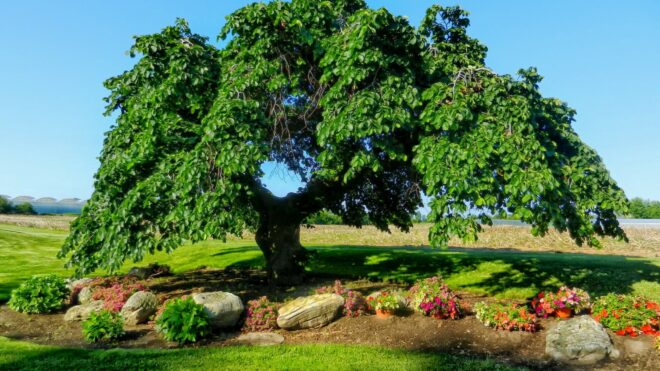Trees provide about 28% of Earth’s atmospheric oxygen that we breathe, making them a staple in our environment. But, when they fall ill, they can pose a problem.
Wait… trees can get sick? Like other living creatures, bacteria, viruses, parasites, and fungi can all infect trees.
Homeowners should keep tabs on the health of their trees. Read on to learn about one common culprit, dutch elm disease, and what to do about it.
Trees Affected By Dutch Elm Disease
As the name suggests, dutch elm disease infects elm trees across North America, Europe, and some parts of Asia. Some especially susceptible species include the wych elm, field elm, and the English elm. Certain other species of trees may also fall prey to this disease.
Many people do not know the species of trees living in their yard. You can identify an elm by its large, draping canopy of oval leaves with double-serrated margins and gray, deeply furrowed bark.
What Is Dutch Elm Disease?
This vascular wilt disease is caused by 3 species of sac fungus in the genus Ophiostoma. Ophiostoma novo-ulmi infects elm trees in the United States.
The fungus attaches to the twigs, branches, or bark of the tree. It feeds on the living tissue inside of the tree and spreads downwards.
As tissues die within the tree, it hinders the ability for the tree to transport water and nutrients. So, it affects more than just the localized area it feeds off of.
Signs of a Diseased Elm
When an elm falls ill with this disease, you will typically begin to notice symptoms towards the end of Spring or the beginning of Summer. First, you will notice outer leaves turning yellow.
As the leaves continue to wilt, they turn brown. You may notice a mix of healthy and wilting leaves on a sick tree. Eventually, they will fall from the tree, leaving dead leaves across the lawn during a time they should flourish.
The bark will show more subtler signs from the outside. Twigs may turn downward, curling at the end.
How Does It Spread?
Dutch elm disease mostly spreads through vectors. The bark beetle feeds inside elm trees and can spread it from an infected tree on to healthy trees. When the fungus grows down to the root of the tree, it can also spread onto nearby elms through grafts.
How to Handle the Situation
The tree cannot be saved once it becomes infected. As it dies, it will make a mess of your lawn, put other trees at risk, and eventually fall, creating a safety hazard and making tree removal necessary.
Do not keep the wood around. You must completely burn it or bury it deep into the ground to prevent devastation to the local tree population.
Call for Tree Removal
Pay attention to your trees. If you notice any sign of Dutch elm disease, do not procrastinate.
We can help you remove your diseased elm safely and efficiently, using the latest equipment. Contact us today for a free estimate.

